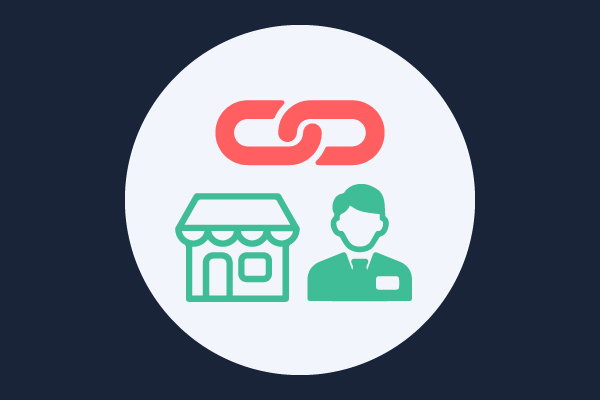6 Most Common Small Business Problems (and how to fix them)
One of the worst things a small business owner can do is ignoring the challenges that may arise in the future.
You cannot avoid these Small Business Problems, but you can overcome them by preparing for these business challenges in advance.
Although every business has unique business problems, there are some common problems that most owners will have to face eventually.
Contents
CHAPTER 1:
Brand Awareness Problem
Struggle to get the word out to the right people?
Can’t even find your brand on search?
It sounds like you have a Brand Awareness Problem!
Why a Brand Awareness Problem hurts a Small Business?
As a customer: how can I buy something I don’t know?
It’s impossible!
That’s why building Brand Awareness of your potential customers is so important.
In a crowded market, it can be challenging to get noticed by consumers.
If there are ten or even 20 brands that clamor for the attention of consumers, your brand must be unique and different to get noticed (especially when competing with more prominent companies).
How to increase Brand Awareness?
Establishing a strong brand is the basis for building Brand Awareness.
It’s crucial to any business, regardless of your industry.
The brand defines the experience consumers have with your brand.
However, the management of a strong and differentiating brand isn’t enough to overcome the challenge.
It’s not enough to be good if no one knows about it!
That’s why getting marketing involved as soon as possible is essential so that customers become aware of your brand.
This may be difficult for owners of a business, that lack marketing experience.
However, your marketing strategy is key to sell your product or service.
CHAPTER 2:
Inability to Scale
Small business growth is rarely a linear or predictable development.
As soon as your business is booming and processes are not designed in a way that allows them to scale, you won’t be able to handle the growth.
The dream of gaining lots of new customers would quickly turn into a nightmare.
Why Inability to Scale hurts a Small Business?
Growing the business is the goal of many small business owners today.
Imagine from one day to the next one your business would have twice as many customers.
Would you be able to handle the growth?
How to Fix Inability to Scale?
You can fix the inability to scale by preparing to scale!
Preparing to scale is crucial – so that when the time comes, you can handle the growth.
By putting the right systems in place, you can automate many processes.
Balancing Quality and Growth is an essential task of any small business.
This may involve that a business cannot manage every customer the way it would like to.
However, at some point, a business must sacrifice something to scale.
CHAPTER 3:
Time Management
There are only 24 hours in a day.
If you spend much time on day-to-day tasks, it becomes difficult to carve out some time to focus on the big picture.
As soon as you are working too unfocused, it leads to low productivity.
Why poor Time Management hurts a Small Business?
CEOs often find it challenging to balance a schedule that includes:
- sales
- marketing
- financing
- product development
- business development
- and many more
Things like brand building are left to be taken care of tomorrow… or the day after… or never!
Being a Small Business Owner, there is a big chance that you lack time to manage your brand.
However, in today’s competitive environment, you have a tough time selling without a strong brand.
For any business that wants to be successful in the long-term, the brand is the foundation of success.
Therefore, strengthening your brand should always be your top priority.
How to Fix poor Time Management?
The best way to fix poor time management is having the right strategy.
Many business owners ask themselves the same questions every day because they lack the right strategy.
As soon as you understand what your brand is about, you can derive many decisions from your strategy.
You won’t even notice that you just made a decision. A decision which you would probably have thought about a long time (or maybe would also have discussed in a meeting with your employees) without having the right strategy.
With a brand strategy, you’ll be able to make decisions based on their value for your brand.
You incorporate anything into the brand, that makes your brand stronger – anything else you reject.
Having a brand strategy is key to being able to focus, allowing you as a business owner to save lots of time for other tasks.
CHAPTER 4:
Client Dependence
A diversified customer base is essential to any business.
If just one single client makes up more than half of your income, you are more of an independent contractor than a business owner.
In the long run, this may be a handicap.
Why Client Dependence hurts a Small Business?
A Business should not be dependent on one single customer.
Just think about it: Losing that customer could sink your entire business!
Also, having just one big customer puts yourself in an awful position for negotiations.
Your customer can pretty much ask you for anything. He knows that you’ll have to accept his conditions because losing him as a customer is not an option for you.
You’ll already be in trouble as soon as the customer starts asking for lower prices or might not pay on time at all.
Putting all eggs in one basket, losing that basket could also result in losing your business.
How to Fix Client Dependence?
You can fix client dependency by diversifying your customer base.
With a diversified client base, you can pick up the slack as soon as things don’t go so well with your key customer(s).
That doesn’t mean you should let go of your single customer (come on, it’s your bread-and-butter customer).
If anything, you should always keep in mind how valuable that customer is to your business.
That being said, you should also consider working on building a strong business relationship with more key customers.
Alternatively, you could adjust your business model so you can go for both: large accounts and a bunch of smaller accounts, too.
This way, you will be able to secure the long-term future of your business.
CHAPTER 5:
Owner Dependence
“You’re only as good as your team.”
While there’s already much truth in the saying in general, it’s one of the Top Challenges among small businesses.
If a Business Owner is unable to delegate, it might eventually make him lose his passion.
Why Owner Dependence hurts a Small Business?
Being able to keep a business running smoothly without the owner wearing himself out is a challenge that many small businesses must face quite early.
Many owners are afraid of the business going down without them.
However, working for many hours (and being under constant pressure) can even wear out the most passionate business owners.
Everyone needs time to recharge every once in a while: even the most passionate and hard-working business owner.
Fatigue can lead to irreversible decisions (and abandoning the business completely is one of them).
How to Fix Owner Dependence?
If you spend lots of time on tasks other than growing your company, you may have a delegation problem!
If a small business owner is unable to delegate, it can be challenging to give every aspect of the business the attention it requires.
Too often, owners try to save money by not hiring experienced staff.
Or, when they do hire someone, they won’t just let them do their job.
The owner can’t be everywhere, doing everything, and making every decision.
It just won’t work!
Building a Quality Team is essential to the growth of any business.
Moreover, if the owner still wants to know what’s going on in the business at all times, having an effective team collaboration system can make everyone’s life a lot easier.
It won’t become confusing so quickly who is working on what and when (working on multiple projects).
Even when you are taking some time off, you can still keep up with what’s happening in the business.
This way, you can be sure everyone is still working on what they need to, which allows you to recharge your batteries.
CHAPTER 6:
Employee Turnover
Every day a business needs a new employee (and doesn’t find one), the company is losing money.
Overworked employees have not enough time to get all the work done, although the business owner already recognized that they need help.
The trouble gets worse, as more employees leave the company.
Why Employee Turnover hurts a Small Business?
Small companies struggle competing with the employment benefits of large corporations (like health benefits, vacation days, or profit-sharing).
More prominent corporations are also often able to pay higher wages, attracting employees away from small businesses.
As a Small Business Owner, you just can’t offer the same conditions as large corporations do (although you might even struggle to pay yourself a decent salary).
That makes it difficult for small businesses to reduce employee turnover.
In addition, it’s hard to find new employees who are affordable, qualified, and are a good fit for your company culture.
So in general, as a Small Business, you struggle to attract and keep top talent.
How to Fix Employee Turnover?
While working at large corporations might have many advantages for employees, working at a small business does also has many benefits.
In general, employees will be given greater responsibility because there isn’t a separate department for every task.
Therefore, small businesses can offer more challenging and satisfying work projects, which provides employees the freedom to working more independently.
By offering leadership training, mentoring, internal recognition, and even small bonuses, you’ll be able to retain your best employees.
You’ll make them feel valuable, which intensifies their connection with your business. Yet there is one thing that improves employee Retention even more:
Having a strong brand.
Employees feel pride in working for a strong brand.
If employees can identify with the mission of your brand, top talent will be willing to waive some of those corporation benefits, because they want to work for your brand.






